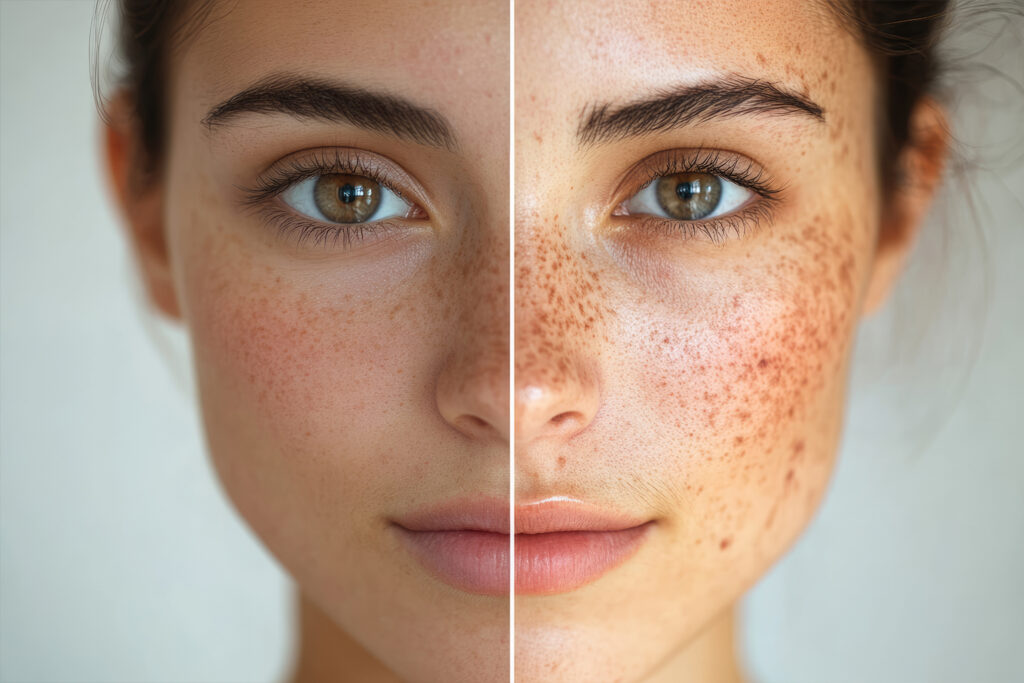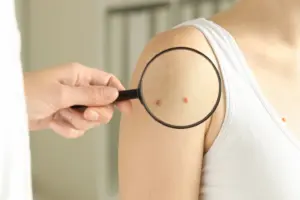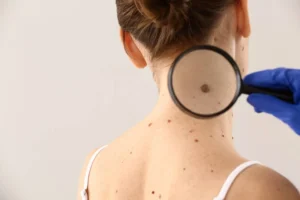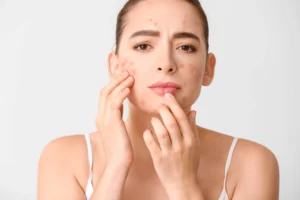
Hyperpigmentation: Ever looked in the mirror and noticed dark patches on uneven skin tones? Well, you are not alone. This common skin issue is called hyperpigmentation, and it affects millions of people of all skin types and ages. While it isn’t dangerous, many want to know what causes it and, more importantly, how to fade it safely and effectively.
What is hyperpigmentation?
Hyperpigmentation happens when certain areas of skin make too much melanin, the pigment that gives colour to your skin, hair, and eyes. When melanin is overproduced or clusters in one spot, it shows up as darker patches or spots that stand out against your normal skin tone.
Also Read | Is that mole dangerous? Skin cancer signs you can’t afford to miss
Different types of hyperpigmentation
Hyperpigmentation appears in several common forms. Melasma appears as larger, map-like patches (often on the face) and is more common in women due to hormonal shifts like pregnancy or birth-control use. Sunspots, also known as solar lentigines, are flat, dark marks that develop on sun-exposed areas, such as the face, hands, and arms, after years of UV exposure. Post-inflammatory hyperpigmentation (PIH) refers to the dark spots that linger after skin injury or inflammation, such as acne, eczema, burns, or cuts, as healing skin overproduces melanin.
What causes hyperpigmentation?
Sunlight increases melanin production. If you spend a lot of time in the sun without wearing sunscreen, you may develop sunspots over time. Additionally, pregnancies, birth control pills, and other hormonal treatments can trigger melasma. Skin inflammation or injury (acne, rashes, or picking) can leave post-inflammatory hyperpigmentation (PIH). Certain medications, including some antibiotics, chemotherapy agents, and anti-seizure drugs, may heighten light sensitivity or alter pigmentation, increasing the risk of dark patches.
Is hyperpigmentation dangerous?
Hyperpigmentation is a cosmetic issue, not a health threat. However, any new, changing, or irregular dark spots, especially those with uneven borders, multiple colours, itching, bleeding, or rapid growth, should be checked by a dermatologist to rule out skin cancer.

How to treat hyperpigmentation safely?
Sunscreen is an essential tool for preventing and treating hyperpigmentation. Use a broad-spectrum SPF 30+ daily and reapply, because even brief UV exposure can deepen dark spots and undo progress. For fading, look for proven brighteners such as vitamin C (antioxidant/brightening), niacinamide, azelaic acid, kojic acid, arbutin, and retinoids.
Also Read | Acne myths vs. facts: What actually works for clear skin?
Remember, hyperpigmentation is common and nothing to be ashamed of; it’s your skin responding to triggers like sun, hormones, or inflammation. With consistent protection and patience, spots typically soften over time, though results vary from person to person.








